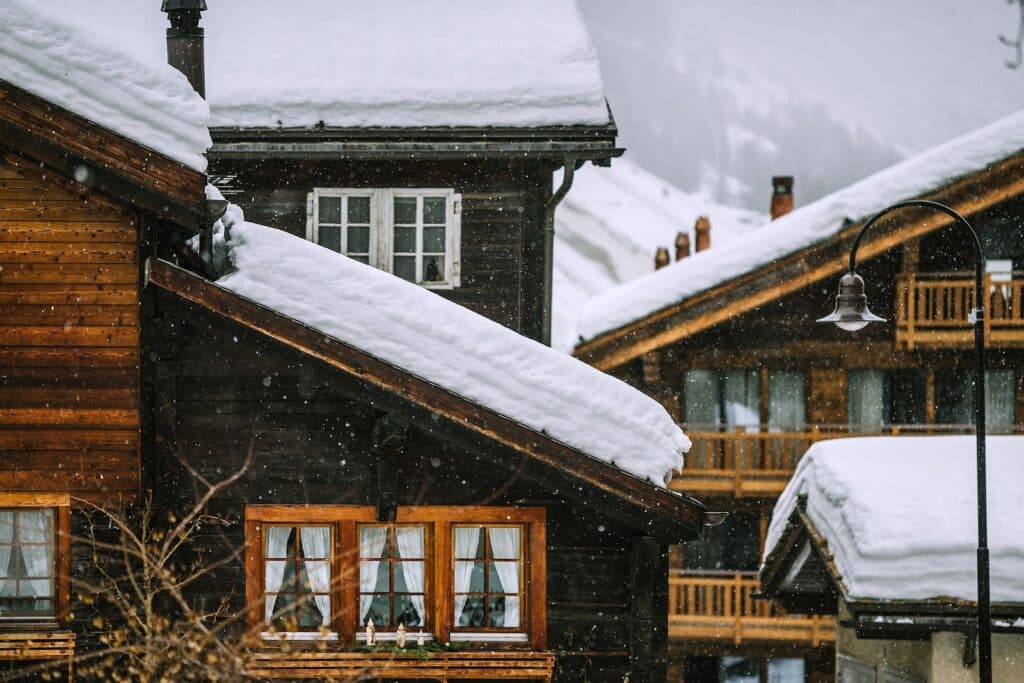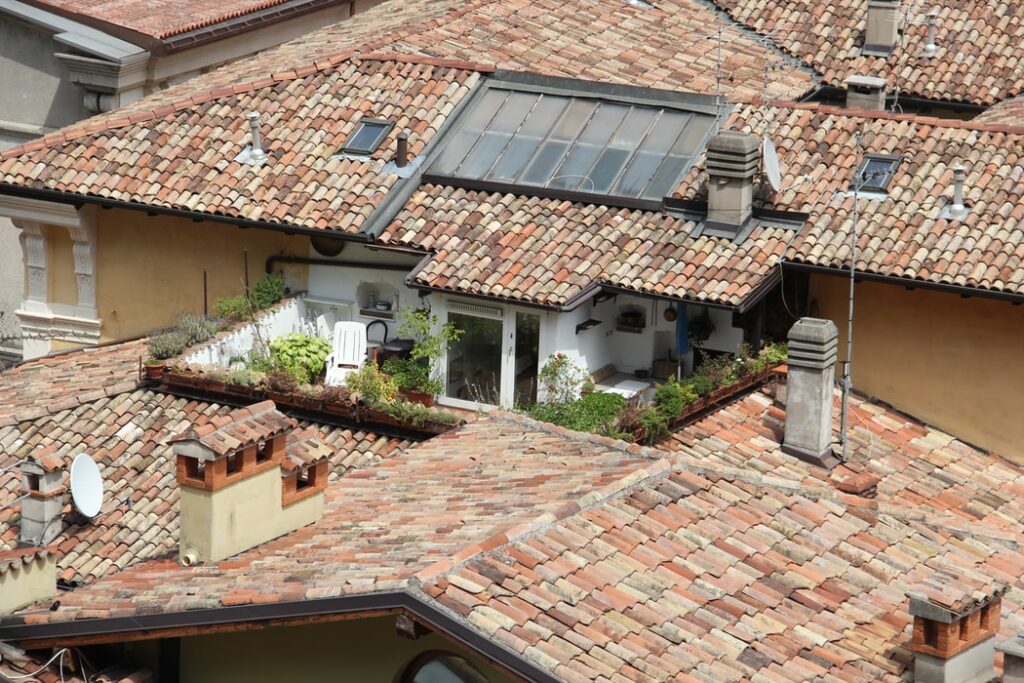Photo courtesy: Unsplash.com
Owning a home comes with several responsibilities, and taking good care of your roof should always be a top priority. Over time, your roof can become damaged, shingles can get loose, or you could end up with annoying leaks.
A roofing inspection can help to ensure that your roof is in great condition, and it will help you pinpoint trouble areas before they get out of control. Read on to learn more about roof inspections, why they’re important, and how they work so that you can be prepared for every season knowing your home is protected.
What is a roofing inspection?
A roofing inspection is a visual examination of the condition of your roof. It’s essential to get a roofing inspection if you suspect that there may be a problem with your roof. The roof inspector will look for red flags indicating your roof is in trouble.
What’s included in a roof inspection?
A roof inspector will examine every component of a roof. They will look at the materials, structure, and interior to check if there are signs of damage.
What do professional roof inspections check?
Structural integrity
The inspector will look at the roof structure to check for any signs of sagging or unevenness. They will also examine the condition of other parts of your roof, including the gutter system, fascia, and soffit. If you have a chimney, the roofing inspector should look for any cracks, missing or crumbling grout, or damage to the chimney cap.
Most inspectors will also look at attic venting to ensure that your roof is adequately ventilated. Moisture can build up in the attic and cause the plywood and shingles to rot. A poorly vented attic may increase the risk of ice dams forming at the roof’s edge if you live in a cold climate.
Condition of materials
The inspector will want to confirm that all parts of your roof are in good condition. Different parts of roofs include shingles, flashing, and fasteners. All shingles should be straight and flat against your roof as well as free of stains and moss.
If the shingles are curled, cracked, or missing, they should be replaced. Your inspector may also examine rubber boots and seals around vent pipes to look for gaps or signs of rotting and deterioration.
Interior
The roof inspector will look at the interior of your home, the ceilings, attic, and interior walls. They will check for signs of mold, rot, or water stains. If these signs are present, there is a possibility that you already have a roof leak or water is getting inside your house.
Workmanship
Poor workmanship could increase the risks of leaks and other roof damage.
Ask your roofing inspector if they could check the workmanship of the installation. They can check for improperly installed flashing or issues with chimneys or skylights. If your roof is under warranty, you might be eligible to file a warranty claim to make repairs.
How often should I schedule a roof inspection?
You should schedule a roof inspection at least once a year. If you’ve recently purchased a home and the last time the roof was inspected was when it was installed, you should schedule a roof inspection.
How do I know that I need a roof inspection?
Whether you recently had a severe storm in your area or noticed a leak, here are some of the reasons to conduct a roof inspection:
- Noticed leaks coming from the ceiling
- Experienced weather such as hurricanes or snowstorms
- Want to put your home on the market
- Waived a home inspection when buying a property
- Received a request from your insurance company to conduct a roof inspection
How long should a roof last?
A quality roof should last between 30 and 50 years, but that doesn’t mean there won’t be any issues as time goes on. Roofs 10 years old or older should be inspected annually for wear and tear. You can inspect your roof yourself, but enlisting the help of a roofing inspector is a better option. A licensed roofing inspector knows what to look for and can make specific recommendations, saving you time and money.

Photo Credit: Pexels
Why are roof inspections important?
Regular roof inspections can identify issues before they get out of hand. For example, you can quickly replace damaged or missing shingles before your roof leaks. A roof inspection confirms that your roof and its major components, like shingles, gutters, and flashing, are all in good condition. If these items are missing or damaged, they can wreak havoc on the rest of your home.
Some homeowner’s insurance companies require you to get an annual roof inspection. Some roofs, such as clay tile or flat roofs, require frequent inspections. Getting regular roof inspections is crucial if you live in an area prone to inclement weather.

Photo Credit: Unsplash
What to expect after the roof inspection?
After the roof inspection, you should receive a detailed written analysis of the findings. The inspector should also recommend specific repairs and tell you what you should do to get it in good condition.
Professional roof inspectors vs. homeowner inspections
The average homeowner can look at their roof and likely pinpoint glaring issues like a missing shingle or granules in the gutter. But a professional inspector can find serious problems that are lurking under the surface.
They also know how to inspect your roof safely. If you’re not experienced with a ladder or fear heights, it’s best to leave your next roofing inspection to the pros. Look for contractors that offer free or low-cost inspections without any obligation to use them for repairs or a new roof, if needed.
What professional roof inspectors do that home inspectors don’t
A home inspector conducts a quick visual examination of the roof to reveal the most obvious issues. But they don’t do a thorough inspection of the roof components.
A professional roof inspector has the skills and knowledge to give you a complete assessment of the condition of your roof. Some roof inspectors use special infrared sensors that help them pinpoint areas of heat loss in the attic and around the edges of your roof. This tool helps to find gaps where water and air could be coming in and out of the top.
Here are some of the most common issues that a roof inspector will check:
- Improper flashing in the valleys, eaves, and rakes
- Leaks or the potential for leaks
- Structural deficiencies
- Deterioration related to age, defects, or weather damage
- Loose, missing, or poorly leveled gutters and downspouts
A home inspector’s job is to ensure that your home’s major components and systems are in good shape. While they will perform a quick visual inspection of your roof, they do not have the tools, background, or expertise to inspect it thoroughly. Aside from red flags like missing shingles or a sagging roof, they likely won’t find issues that can’t be seen with the naked eye.

Photo Credit: Pexels
Best time to do roof inspections
The best time of year to get a roof inspection depends on your location, climate, and roof condition. But if your roof needs repairs, it’s best to schedule them during the fall or spring when temperatures are better for working outside. It’s also a good idea to check your roof after severe weather like hurricanes or snow storms.
If you’re worried about damage to your roof, inspect it before summer or winter.
The intense heat and thunderstorms during summer can put your roof at risk. When temperatures drop, snowstorms and ice can also cause issues. Experts recommend an annual roof inspection during the spring or fall to check for any damage from the previous season.
A roof inspection is a preventative maintenance procedure that is easy to overlook. Don’t do that. Put a reminder on your calendar to examine your roof every year.
Your roof is one of the most expensive home inspection problems. Getting it inspected regularly can help you catch issues early on and avoid high bills in the future. A licensed roof inspector can examine your roof to check its exact condition and recommend necessary repairs. If you suspect your roof could be damaged, it’s a good idea to get it inspected right away.

